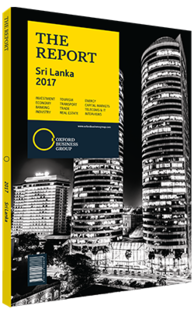Samantha Ranatunga, Chairman, Ceylon Chamber of Commerce: Interview

Interview: Samantha Ranatunga
In what ways can policymakers promote regional economic integration?
SAMANTHA RANATUNGA: Policymakers use different methods to promote regional economic integration. Trade agreements are a common method of integration, and Sri Lanka has signed agreements with countries such as India and Pakistan. In the near future Sri Lanka will sign an expanded trade agreement with India in addition to signing agreements with China, Singapore, Turkey and the US.
Another way to promote integration is through visa requirements, which would encourage the right talent into countries. This is a method that is used by the US, Australia and New Zealand in order to invigorate their economies.
However, as attractive as trading circumstances may be, if the underpinning security, laws, asset protections, workers, human rights, environment, economic policies and repatriation of funds are not available, economic integration will suffer from a weak foundation. Hence, a strong base needs to be built before economic strategies can work.
To what extent should India be viewed as an economic partner rather than a competitor?
RANATUNGA: Sri Lanka’s market is limited to 20m people, with a population growth rate of around 1%. Most of the population is ageing and will move to the fringes of their earning capacities within a few more years. In contrast, India’s middle class is set to rise to 10 times our entire population. The top 100m lead a lifestyle similar to that in Europe and the US. Hence, it is a lucrative market and we need to be a part of their value chain in order to expand and diversify our markets.
If adequate measures are taken to ensure a level playing field and resolve various trade barriers, we will be able to substantially boost trade between our countries. Sri Lanka’s proximity to the dynamic and growing states in south India is an advantage we can and must leverage on.
We are already seeing strategic investments that have been made by Sri Lankan garment companies, such as MAS and Brandix in Tamil Nadu and Andhra Pradesh, respectively. Greater dialogue between the Sri Lankan private sector and government policymakers is required in order to allay the fear of the private sector, and to truly take bilateral trade and investment to new heights.
How can ease of doing business in Sri Lanka be improved in order to attract foreign investment and increase competitiveness?
RANATUNGA: Today ease of doing business is a key criterion when it comes to judging a country’s investment competitiveness. Though Sri Lanka had done fairly well until recently, especially after the civil war, our numbers have gone down compared to India in the recent past. We have to take into account that ease of doing business is a key criterion to defining our investment climate.
In the last few years, though we have had a significant GDP growth rate, our foreign direct investment (FDI) targets have been woefully inadequate. In the last two years Sri Lanka was not even able to attract over $1bn in FDI. Policy transparency, rigid government structures, clear-cut fiscal and monetary policy, a stable currency, a knowledgeable and competitive labour market, a policy framework that is simple and implementable, and a one-stop-shop concept for investors are some of the main areas that we need to adequately compete in.
We need a holistic government approach that extends across many government agencies and departments to improve ease of doing business in Sri Lanka. We must also remember that easing business climate constraints not only helps foreign investors, but also certainly helps domestic investors too.
You have reached the limit of premium articles you can view for free.
Choose from the options below to purchase print or digital editions of our Reports. You can also purchase a website subscription giving you unlimited access to all of our Reports online for 12 months.
If you have already purchased this Report or have a website subscription, please login to continue.

